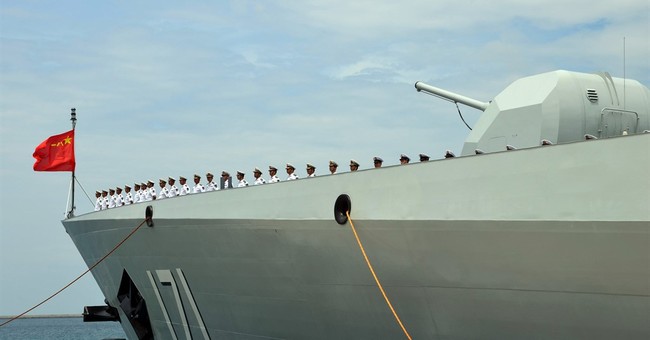Aircraft Carriers: China Versus America

Those days are gone. The Peoples Liberation Army Navy (a convoluted title if ever there was one) is serious about developing aircraft carriers, and probably intends to become the world’s second-ranking practitioner of that esoteric martial art. However, we’re seeing the inception of a long-term program because it will likely take decades before the PLA-N can seriously oppose the U.S. Navy.
China usually is rated third in warship strength, ranking between Russia and Japan. With about 240 combatant vessels, the PLA-N has increasingly looked to a “blue water” capability.
But merely counting hulls can be deceptive. When ranking by number of ships, several factors are omitted. Besides raw combat power, bases and operational sustainability are crucial to sea control and offensive capability. The U.S. excelled in that capacity during WW II, keeping a hundred-ship task force at sea in the Western Pacific for weeks at a time.
Today, America’s 3.5 million tons of naval vessels overwhelms any conceivable enemies, notably Russia’s 850,000 tons and China’s 700,000.
However, China has the geographic advantage of operating relatively close to home. Its controversial program of building island bases in the South China Sea has raised tension in the region, especially with Japan, Vietnam, and the Philippines. The advantage is obvious: with land-based airpower well at sea, Beijing needn’t rely wholly upon carriers.
Liaoning, named for the province adjoining North Korea, is a lightweight compared to any U.S. carrier. With conventional propulsion, she is rated at some 60,000 tons while America’s nuclear-powered Nimitz class ships run 100,000 or more.
Nonetheless, Liaoning made progress. China selected the
Russian-designed Sukhoi 33 strike-fighter as primary carrier aircraft, augmented by antisubmarine helicopters. The Sukhoi design is produced in China as the J-15, incorporating airframe and avionics changes made locally. Beijing reported the first carrier landings in 2012, with pilot training accelerating thereafter.
Unlike Western carriers, Liaoning has a “ski jump” ramp to assist takeoffs, a simpler but less capable option than powerful steam catapults. The ramp limits launch weight, which in turn limits offensive payload and range. The J-15 is notoriously short-legged.
Thus far, Liaoning’s air wing lacks some important components of Western navies. The Chinese do not have a carrier-based early-warning aircraft such as the Grumman E-2 Hawkeye, nor carrier-based in-flight refueling, a shortage that limits aircraft range. (In fairness, however, the U.S. Navy relies heavily upon Air Force tankers for long missions.)
Whatever its carrier capability, the PLA-N has many years of work ahead. Landing high-performance aircraft on pitching, rolling decks probably is the most difficult task that humans have ever routinely performed. It took the U.S. and Japanese navies nearly twenty years to perfect equipment and doctrine for combat.
But carrier operations involve far more than airplanes. Training crews of the carriers and support vessels is a continuous process, let alone integrating seaborne and land-based elements into an overall network. Underway replenishment; damage control and survivability; coordinating aircraft, ships, and submarines all are essential elements.
China does have one advantage at present. Its modern escort vessels deploy very long-range surface-to-air missiles that could offset the shortcomings of carrier fighters.
The Chinese would try to blind our battle group by destroying communication, surveillance, and navigation satellites. Whether we could retaliate in kind is uncertain. But it is intriguing to posit a mid-to-late 21st century Commander Wade McClusky, working his plotting board in his jet’s cockpit, emulating his 1942 counterpart in the Battle of Midway. In that far-off scenario, control of the South China Sea or the Indian Ocean might hang in the balance.

No comments:
Post a Comment